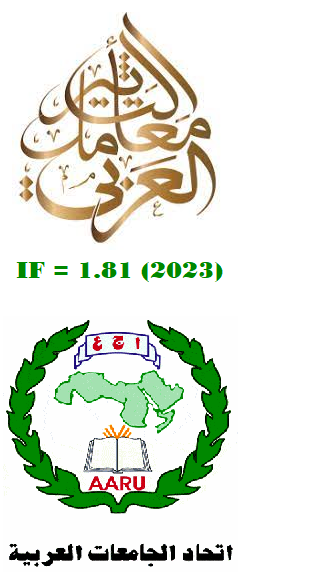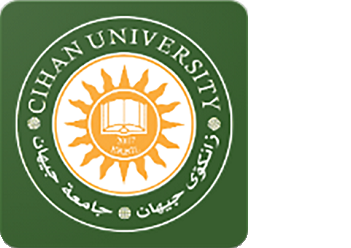The Motivational Impact of Enhancing Reading Comprehension through Pictorial Fictions on the Involvement of Iranian EFL Students in Writing Activities
Abstract
Determining the motivational impact of enhancing reading comprehension, through pictorial fictions, on the EFL students to involve them more in writing activities, is the prime purpose of the present study. The study took place in the Iranian Language Institute (ILI), the branch of Mahabad. Key English Test (KET) administrated to a hundred students to select the subjects of the present study. Finally, 60 male students were selected and randomly divided into the experimental and control groups. The experimental group received pictorial fictions as treatment, utilizing input reading comprehension enhancement through typographic elements, and direct and indirect feedback provided to them, while the control group received pictorial fiction texts without such inputs, then to collect the intended data, the "Academic Writing Motivation Questionnaire" (AWMQ) was administered to both groups separately in two stages of pre-tests and post-tests. The results showed that enhancing reading comprehension has a significant motivational impact on the writing engagement of Iranian EFL learners.
Downloads
References
Ackerman, J. D. (2006). The Motivation for Writing Through Blogs. Available from: https://www.etd.ohiolink.edu. [Last accessed on 2021 Jan 20].
Al- Mansour, N. S., & Al-Shorman, R. A. (2014). The effect of an extensive reading program on the writing performance of Saudi EFL university students. International Journal of Linguistics, 6(2), 258-275.
Alison, J., & Halliwell, S. (2002). Challenging Classes: Focus on Pupil Behavior. London, UK: CILT.
Al-Shourafa, A. (2012). The effect of motivation on Jordanian 10th-grade students’ writing skill in English. European Scientific Journal, 8(22), 235-247.
Arianna, M.J. (2014). Explorations into the Psycholinguistic Validity of Extended Collocations. Dissertations and Theses. Available from: https://www.pdxscholar. library.pdx.edu/open_access_etds. [Last accessed on 2021 Jan 27].
Birketveit, A. (2013). Picture book in EFL; vehicles of visual and verbal literacy. Nordic of Journal Modern Language Methodology, 45(1), 100-116.
Birketveit, A., & Rimmereide, H. E. (2013). Using authentic picture books and illustrated books to improve L2 writing among 11-year-olds. The Language Learning Journal, 45(1), 100-116.
Çakır, İ. (2010). Why is it difficult to acquire writing skills in ELT? Journal of Social Sciences, 28(1), 165-167.
Carry, S. (2012). Critical Content Analysis of Visual Images: Reading Images. 3rd ed. Harlow: Pearson Education.
Chambers, G. N. (1999). Motivating Language Learners. Clevedon: Multilingual Matters.
Chen, J. F., Warden, C. A., & Chang, H. T. (2005). Motivators that do not motivate: The case of Chinese EFL learners and the influence of culture on motivation. TESOL Quarterly, 39(3), 609-633.
Dilts, R. (1998). Modeling with NLP. California: Scotts Valley, Meta Publications. Dornyei, Z. (2001). Motivational Strategies in the Language Classroom. Cambridge, UK: Cambridge University Press.
Dornyei, Z., & Csizer, K. (1998). Ten Commandments for motivating language learners: Results of an empirical study. Language Teaching Research, 2(1), 203-229.
Dornyei, Z., & Ushioda, E. (2011). Teaching and Researching Motivation. 2nd ed. Harlow: Pearson Education.
Gupta, D., & Woldemariam, G. S. (2011). The influence of motivation and attitude on writing strategy use of undergraduate EFL students: Quantitative and qualitative perspectives. Asian EFL Journal, 13(2), 34-89.
Hamidun, N., Hashim, S., & Othman, N.F. (2012). Enhancing students’ motivation by providing feedback on writing: The case of International students from Thailand. International Journal of Social Science and Humanity, 2(6), 591-594.
Harmer, J. (1991). The Practice of English Language Teaching. London: Longman.
Hashemian, M., & Heidari, A. (2013). The relationship between L2 learners’ motivation/attitude and success in L2 writing. Procedia-Social and Behavioral Sciences, 70, 476-489.
Hornby, A.S. (2000). Oxford Advanced Learner’s Dictionary, 6th ed. Oxford: Oxford University Press.
Hyland, K. (2003). Second Language Writing. NewYork: Cambridge University Press.
John, E. (2009). Robin Hood. 3rd ed. Oxford: Oxford Bookworms Starter.
Johnson, K. E. (1995). Understanding Communication in Second Language Classroom. Cambridge: Cambridge University Press.
Kirin, W. (2010). Effect of extensive reading on students’ writing ability in an EFL class. The Journal of Asian EFL Class, 7(1), 285-308.
Lam, S. F., & Law, Y. K. (2007). The roles of instructional practices and motivation in writing performance. The Journal of Experimental Education, 75(2), 145-164.
Lo, J., & Hyland, F. (2007). Enhancing Students’ Engagement and Motivation in Writing: The Case of Primary Students in Hong Kong. Available from: https://www.semanticscholar.org/paper/Enhancing-Students'-Engagement-andMotivation-in-of-Lo-Hyland/9079b68d577d0bb7ce74a568ab0d20af1c1f2b82. [Last accessed on 2021 Jan 27].
Myles, J. (2002). Second language writing and research: The writing process and error analysis in Student texts. TESL EJ, 6(2), 8. Available from: http://wwwwriting.berkeley.edu/TESL-EJ/ej22/toc.html. [Last accessed on 2007 Jan 11].
Pang, E. S. (2003). Teaching Reading “Educational Practices Series-12”. Switzerland: International Academy of Education.
Payne, A.R. (2012). Development of the Academic Writing Motivation Questionnaire. Available from: https://www.getd.libs.uga.edu/pdfs/payne_ashley_r_201212_ma.pdf. [Last accessed on 2021 Jan 27].
Rabely, S. (2002). April in Moscow. United States: Penguin Publication.
RAND Corporation, Reading for Understanding. (2002). Available from: https:// www.rand.org/about/glance.html. [Last accessed on 2021 Jan 27].
Salehi, H., Asgari, M., & Amini, M. (2015). Impacts of the extensive reading texts on the writing performance of Iranian EFL pre-university students. Asian Journal of Education and E Learning, 3(4), 306-316.
Silva, T., & Nicholls, J. (1993). College students as writing theorists: Goals and beliefs about the causes of successes. Contemporary Educational Psychology, 18(1), 281-293.
Stevenson, R. (2000). Treasure Island. England: Penguin Classics. Ushioda, E. (2008). Motivation and good language learners. In: Griffiths, C. (Ed.), Lessons From Good Language Learners. Cambridge: Cambridge University Press. pp19-34.
Ushioda, E. (2011). Language learning at university: Exploring the role of motivational thinking. In: Dörnyei, Z., and Schmidt, R. (Eds.), Motivation and Second Language Acquisition. Honolulu, HI: University of Hawaii Press.
pp93-125.
Walter, S. (2012). Run for Your Life, Penguin Readers Level 1. United Kingdom: Pearson Education ESL.
Williams, M., & Burden, R. L. (1997). Psychology for Language Teachers: A Social Constructivist Approach. Cambridge: Cambridge University Press.
Zainal, Z., & Husin, S. H. B. (2011). A study on the effects of reading on writing performance among faculty of civil engineering students. The Asian EFL Journal Quarterly, 9(1), 23-35
Copyright (c) 2021 Fereydoon Rasouli, Omid Ahmadi

This work is licensed under a Creative Commons Attribution-NonCommercial-NoDerivatives 4.0 International License.
Authors who publish with this journal agree to the following terms:
1. Authors retain copyright and grant the journal right of first publication with the work simultaneously licensed under a Creative Commons Attribution License [CC BY-NC-ND 4.0] that allows others to share the work with an acknowledgment of the work's authorship and initial publication in this journal.
2. Authors are able to enter into separate, additional contractual arrangements for the non-exclusive distribution of the journal's published version of the work (e.g., post it to an institutional repository or publish it in a book), with an acknowledgment of its initial publication in this journal.
3. Authors are permitted and encouraged to post their work online (e.g., in institutional repositories or on their website) prior to and during the submission process, as it can lead to productive exchanges, as well as earlier and greater citation of published work (See The Effect of Open Access).









